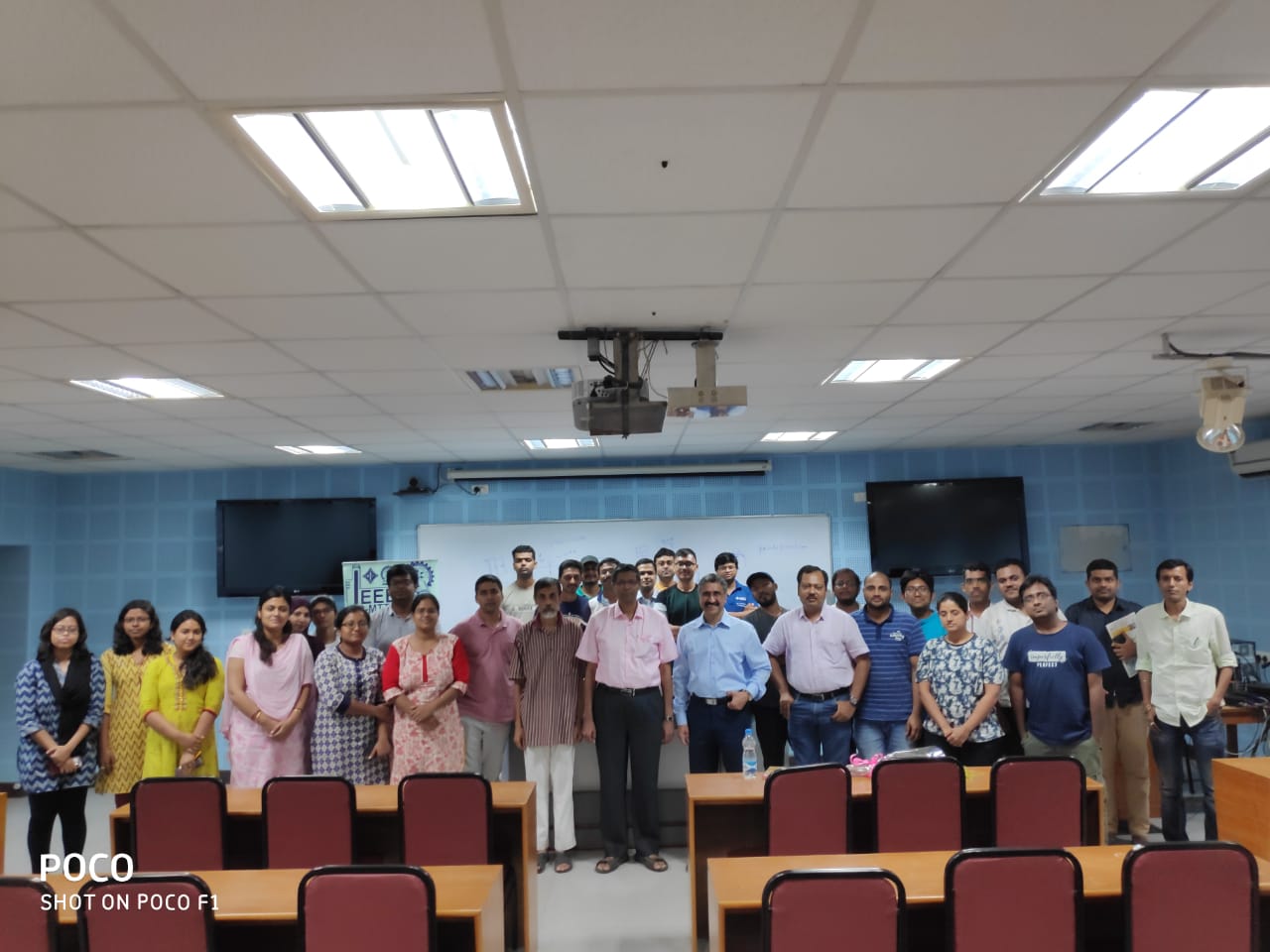IEEE-AP-MTTS SBC Distinguished Lecture by Dr. Arun K. Bhattacharyya

Phased array antennas are becoming increasingly popular in satellite communications because of their inherent advantages of beam reconfigurability. In this talk we present an overview of modern phased array technology in communication satellites. The talk begins with a brief history of phased array antennas followed by its basic architecture and operating principle. We then briefly discuss various applications of phased array antennas including target identification and communication. Performance comparison between array-fed reflector and direct radiating array is presented next. Methods for aperture analysis and beam synthesis are discussed. Different types of beam forming networks are shown and their operating principles are explained. The talk ends with a discussion of design challenges for radiating elements, active components and beam forming networks.
Date and Time
Location
Hosts
Registration
-
 Add Event to Calendar
Add Event to Calendar
- Dept of Electronics and Electrical Communication Engineering
- IIT Kharagpur
- West Midnapore, West Bengal
- India 721302
- Room Number: NKN Seminar Room
- Contact Event Host
-
Priyanka Deb SinhaEmail-id: debsinhapriyanka008@gmail.com
Speakers
Dr. Arun K. Bhattacharyya of RF Center of Excellence of Lockheed Martin Corporation
Phased Array Antennas: Space Applications and Challenges
Phased array antennas are becoming increasingly popular in satellite communications because of their inherent advantages of beam reconfigurability. In this talk we present an overview of modern phased array technology in communication satellites. The talk begins with a brief history of phased array antennas followed by its basic architecture and operating principle. We then briefly discuss various applications of phased array antennas including target identification and communication. Performance comparison between array-fed reflector and direct radiating array is presented next. Methods for aperture analysis and beam synthesis are discussed. Different types of beam forming networks are shown and their operating principles are explained. The talk ends with a discussion of design challenges for radiating elements, active components and beam forming networks.
Biography:
Arun K. Bhattacharyya received his B.Eng. degree in electronics and telecommunication engineering from Bengal Engineering College, University of Calcutta in 1980, and the M.Tech. and Ph.D. degrees from Indian Institute of Technology, Kharagpur, India, in 1982 and 1985, respectively.
From November 1985 to April 1987, he was with the University of Manitoba, Canada, as a Postdoctoral Fellow in the electrical engineering department. From May 1987 to October 1987, he worked for Til-Tek Limited, Kemptville, Ontario, Canada as a senior antenna engineer. In October 1987, he joined the University of Saskatchewan, Canada as an assistant professor of electrical engineering department and then promoted to the associate professor rank in 1990. In July 1991 he joined Boeing Satellite Systems (formerly Hughes Space and Communications), Los Angeles as a senior staff engineer, and then promoted to scientist and senior scientist ranks in 1994 and 1998, respectively. Dr. Bhattacharyya became a Technical Fellow of Boeing in 2002. In September 2003 he joined Northrop Grumman Space Technology group as a staff scientist and then became Distinguished Engineer and Engineering Fellow at Northrop Grumman. At present he is with the RF Center of Excellence of Lockheed Martin Corporation and working as a Principal Scientist. He is the author of “Electromagnetic Fields in Multilayered Structures-Theory and Applications”, Artech House, Norwood, MA, 1994 and “Phased Array Antennas, Floquet Analysis, Synthesis, BFNs and Active Array Systems”, John Wiley, 2006. He authored over 100 technical papers, 5 book-chapters and has 20 issued patents. His technical interests include electromagnetics, printed antennas, multilayered structures, active phased arrays and modeling of microwave components and circuits.
Dr. Bhattacharyya became a Fellow of IEEE in 2002. He was a Distinguished Lecturer of IEEE APS society from 2011 to 2014. He served as an associate editor of IEEE Transaction Antennas and Propagation from 2012to 2016. Dr. Bhattacharyya is a recipient of numerous awards including the 1996 Hughes Technical Excellence Award, 2002 Boeing Special Invention Award for his invention of “High Efficiency horns”, 2003 Boeing Satellite Systems Patent Awards, 2005 Tim Hannemann Annual Quality Award and 2007 Distinguished Engineer award at Northrop Grumman Space Technology.
Address:RF Center of Excellence of Lockheed Martin Corporation ,
Media
| Distinguished Lecture by Dr. Arun K. Bhattacharyya | Prof. Mrinal Kanti Mandal welcoming Dr. Arun K. Bhattacharyya | 87.22 KiB |
| Distinguished Lecture by Dr. Arun K. Bhattacharyya | Prof. Bratin Ghosh felicitating Dr. Arun K. Bhattacharyya with memento. | 102.88 KiB |
| Distinguished Lecture by Dr. Arun K. Bhattacharyya | Group picture with Dr. Arun K. Bhattacharyya | 107.47 KiB |

